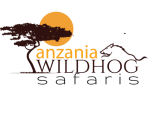Mikumi is one of Tanzania’s tourists impressive national park locate in southern within Morogoro region and most accessible from Dar es Salaam, with almost guaranteed year round wild life sightings, for those without much time. It’s open horizons and abundant wildlife draws common comparison to the more famous Serengeti Plains and hence the name (“Little Serengeti”). The park borders the Selous Game Reserve to the south and the two areas form an exclusive ecosystem within its 3230sq km – set between the Uluguru mountains in the northeast, the Rubeho mountains to the northwest and the Lumango Mountains to the southeast- This area is especially good for sporting buffaloes –often quite near the roadside-as well as giraffes, elephants and zebras with also Hippos in the northwest of the main entry gate, predators like Lions are fermace too.
If you are travelling for education purpose and note for leisure Mikumi National Park is also the super destination for students and Researchers. However Mikumi is an important educational and research centre. Among the various projects being carried out is ongoing field study of yellow baboons, which is one of just a handful of such long-term primate study on continent.
Sharing a common border and ecosystem with Selous Game Reserve to the south, Mikumi National Park is only three to four hours’ drive from Dar es Salaam, lying astride the main highway to Zambia, and en route to Udzungwa Mountains, Ruaha and Kitulo Plateau National Parks. The main feature of the park is the Mkata flood plain that is very good for wildlife spotting. Open grasslands dominate in the flood plain, eventually merging with the miombo woodland covering the lower hills.
WILDLIFE.
An area of 3,230 sq. km, with variety of vegetation type is rich in wildlife including buffalo, wildebeest, zebra, lion, elephant, impala, hippos, baboon, giraffe, warthog, waterbuck and eland which can be viewed throughout the year. Reptiles including crocodile, monitor lizard and python are also resident in the park. Other animals that can be sighted although rare seen are the Sable Antelope resident in the southern part of the park bordering the Selous, the Greater Kudu, leopard, and the wild dog also known as the African Hunting Dog. And more than 400 bird species have been recorded, including European migrants during the rainy season.
Mikumi National Park is one of the most popular visitor points from Dar es Salaam being easy accessible. Being close to Dar es Salaam on good road, day trips are popular especially for those who have little time to spend an overnight there. But we recommend to spend at least a night in the or nearest accommodation to enjoy a fulfilling game viewing in this fascinating park.
Mikumi Camp and Lodges are more basic compared with other national parks. But we would recommend some for you:
- Tan-Swiss Lodge/Camp sight and Restaurant
- Mikumi Resort
- Vamos Hotel
- Camp Bastian
- Vuma Hills Tented Camp
- Stanley’s Kopje Camp
TRAVEL DURATION & TIME TO MIKUMI NATIONAL PARK
Dar es Salaam – Mikumi: 4 hrs. drive
Selous – Mikumi: 10 hrs. drive through the interior villages that might leave you with wonderful experience (Some do take flight)
Udzungwa – Mikumi: 1.5 – 2 hrs.
Ruaha – Mikumi: drive 5-6 hrs. Via Iringa Town. (Some do take flight)


